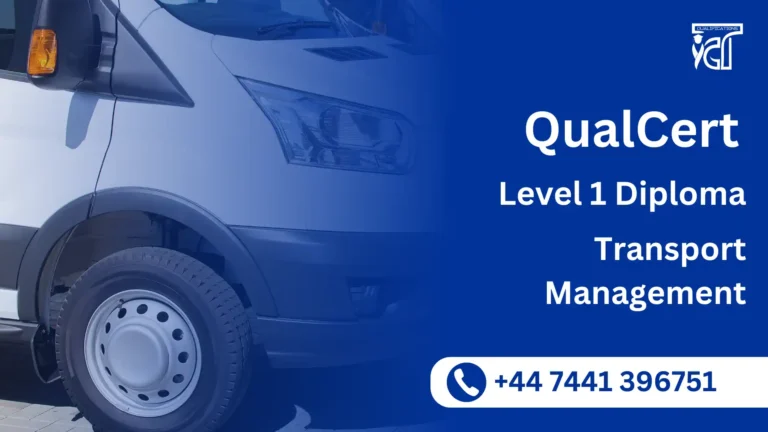In today’s rapidly evolving technological landscape, mechatronics engineering stands at the forefront of innovation. The QualCert Level 3 Diploma in Mechatronics Engineering provides a comprehensive foundation in this multidisciplinary field, blending mechanical engineering, electronics, robotics, and computer science. This qualification is ideal for individuals aiming to pursue advanced careers in automation, robotics, and smart systems.
Whether you are an aspiring engineer or a professional looking to expand your skill set, this Ofqual-regulated qualification will equip you with the expertise required to thrive in the dynamic world of mechatronics.
The QualCert Level 3 Diploma in Mechatronics Engineering is designed to provide learners with advanced knowledge and practical skills in the principles of mechatronics. By integrating mechanics, electronics, computer systems, and control engineering, this course helps learners understand how these fields intersect to create cutting-edge solutions in industries such as robotics, automation, manufacturing, and aerospace.
This course offers a blend of theoretical knowledge and hands-on experience, making it a perfect qualification for those looking to step into roles that require advanced technical skills in mechatronics engineering.
The QualCert Level 3 Diploma in Mechatronics Engineering is an essential qualification for anyone looking to develop expertise in one of the most exciting and rapidly growing sectors of engineering. With a strong focus on practical skills and real-world applications, this course will provide you with the knowledge and experience necessary to succeed in the fields of automation, robotics, and smart technologies.
Start your journey in mechatronics engineering today and open the door to a future in cutting-edge technology!
QualCert Level 3 Diploma in Mechatronics Engineering
The QualCert Level 3 Diploma in Mechanical Technology is a 40 credits qualification with a Total Qualification Time (TQT) of 400 hours, including 200 Guided Learning Hours (GLH). This course is thoughtfully designed to provide targeted and efficient skill development in the field of Mechanical, offering learners a solid foundation to build their expertise.
| Unit Ref# | Unit Title | Credit | GLH | TQT |
| QC03005 – 1 | Mechatronics System Design | 7 | 35 | 70 |
| QC03005 – 2 | Embedded Systems & Microcontrollers | 6 | 30 | 60 |
| QC03005 – 3 | Sensors & Actuators | 7 | 35 | 70 |
| QC03005 – 4 | Industrial Robotics & Control | 7 | 35 | 70 |
| QC03005 – 5 | Mechatronics Integration & Simulation | 6 | 30 | 60 |
| QC03005 – 6 | Control Systems Engineering | 7 | 35 | 70 |
GLH (Guided Learning Hours) and TQT (Total Qualification Time) are terms commonly used in vocational qualifications to help define the amount of time a learner is expected to spend on their studies.
1. GLH (Guided Learning Hours)
GLH refers to the number of hours a learner spends being directly taught, supervised, or supported during their course. This includes the time spent in activities such as:
- Classroom instruction
- Practical workshops
- One-on-one tutoring or mentoring sessions
- Online learning sessions with tutor support
In other words, GLH represents the time that learners are actively engaged with their instructors or learning activities.
2. TQT (Total Qualification Time)
TQT represents the total amount of time a learner is expected to invest in completing a qualification, including:
- GLH (Guided Learning Hours): Time spent on direct learning, as explained above.
- Self-Directed Learning: This includes time spent on independent study, research, assignment completion, preparation for exams, and any other work the learner does outside of direct teaching hours.
TQT is a broader measure that includes all the time required to achieve the qualification. It helps learners and employers understand the overall commitment required for the qualification.
Key Differences Between GLH and TQT:
- GLH focuses on direct learning with guidance or supervision.
- TQT includes GLH as well as independent study time and other learning-related activities.
Example:
If a qualification has a TQT of 600 hours and a GLH of 250 hours, it means the learner should spend 250 hours in direct learning (classroom, online, or tutor-led sessions) and 350 hours on independent study or research.
Learning Outcomes: level 3 diploma in Mechatronics Engineering
Upon successful completion of the Level 3 Diploma in Mechatronics Engineering, learners will be able to:
- Mechatronics System Design
- Gain a thorough understanding of the principles and methodologies involved in designing mechatronic systems.
- Develop the ability to analyze and evaluate the requirements for integrating mechanical, electrical, and software components.
- Learn how to design and simulate mechatronic systems to meet specified performance, efficiency, and safety standards.
- Acquire skills in selecting appropriate materials, components, and technologies for the system design process.
- Understand the trade-offs in design decisions and their impact on system performance and cost-effectiveness.
- Embedded Systems & Microcontrollers
- Understand the role and architecture of embedded systems in mechatronics applications.
- Gain proficiency in programming microcontrollers for real-time control and system integration.
- Develop skills in designing, testing, and troubleshooting embedded systems for mechatronic applications.
- Learn how to interface microcontrollers with sensors, actuators, and other electronic components in a mechatronic system.
- Acquire knowledge in using embedded systems to control and automate complex mechanical and electrical processes.
- Sensors & Actuators
- Understand the working principles of various sensors and actuators used in mechatronics applications.
- Develop the ability to select and integrate sensors for measurement and feedback within mechatronic systems.
- Learn to choose appropriate actuators to control mechanical movements and responses.
- Gain skills in calibrating and troubleshooting sensors and actuators to ensure accurate performance.
- Understand the role of sensors and actuators in providing real-time data for control systems in mechatronic applications.
- Industrial Robotics & Control
- Understand the fundamentals of industrial robots, including kinematics, dynamics, and control systems.
- Develop the ability to program and operate industrial robots for automation tasks in manufacturing environments.
- Learn the integration of sensors, actuators, and control systems in robotic systems for precise and efficient operations.
- Acquire hands-on experience with robotic systems, including simulation and troubleshooting techniques.
- Understand safety protocols, operational limits, and performance optimization in industrial robotics applications.
- Mechatronics Integration & Simulation
- Learn how to integrate mechanical, electrical, and software components into a cohesive mechatronic system.
- Develop skills in simulating mechatronic systems to predict performance and identify potential issues before physical implementation.
- Understand system-level design and optimization techniques to improve overall system functionality and efficiency.
- Gain proficiency in using simulation software and tools for modeling and testing mechatronic systems.
- Develop the ability to apply integration and simulation techniques in real-world industrial scenarios.
- Control Systems Engineering
- Understand the fundamental principles of control systems used in mechatronics, including feedback loops, stability, and system dynamics.
- Develop the ability to design and implement control systems for managing mechatronic systems and ensuring desired performance.
- Learn about various control strategies, such as PID (Proportional-Integral-Derivative) control, and their application in mechatronics.
- Gain proficiency in using software tools to model, simulate, and tune control systems.
- Understand the practical aspects of control system implementation, including real-time monitoring, performance evaluation, and system optimization.
Benefits of the QualCert Level 3 Diploma in Mechatronics Engineering
- Ofqual-Regulated and Industry-Recognized
This course is Ofqual-regulated, ensuring it meets the high standards set by the UK government. It’s recognized by employers and industry professionals worldwide, making it a trusted qualification in the field of mechatronics engineering. - Hands-On, Practical Learning
The course is designed to give students practical, hands-on experience in mechatronics systems, automation, robotics, and control systems. This approach prepares you for real-world applications, ensuring you are job-ready upon completion. - 100% Coursework-Based Assessment
The assessment method for this qualification is based entirely on assignments and practical tasks rather than exams. This allows you to demonstrate your understanding and skills in a more practical and applied manner. - Comprehensive Understanding of Mechatronics
This diploma covers all key areas of mechatronics, including mechanical systems, electrical circuits, control systems, robotics, and CAD design. By the end of the course, you will have a well-rounded understanding of how these systems integrate to create cutting-edge technology. - Career-Boosting Opportunities
Mechatronics engineering is a high-demand field with applications in automation, robotics, and advanced manufacturing. Completing this diploma opens up a range of career opportunities in industries such as robotics, aerospace, automotive, and manufacturing. - Flexibility with Learning
The flexible learning format allows you to study online or via blended learning, making it easy to balance your education with other commitments. You can learn at your own pace and choose the study mode that suits you best. - Foundation for Further Study
The Level 3 Diploma serves as a stepping stone for higher qualifications, including Level 4 or Level 5 Diplomas in mechatronics, electrical engineering, or robotics, as well as undergraduate degrees in engineering-related fields. - Increased Employability
With this qualification, you’ll gain valuable skills in automation, robotics, and control systems that are highly sought after in the job market. This diploma gives you a competitive edge when applying for engineering roles, increasing your employability. - Focus on Cutting-Edge Technologies
Learn about emerging technologies in automation, robotics, and smart systems. As industries continue to evolve, mechatronics engineers play a key role in developing the technologies of the future. - Global Opportunities
The skills and knowledge gained from this diploma are transferable to global markets. With industries worldwide relying on mechatronics systems, your qualifications will be highly respected and provide opportunities both within the UK and internationally.
These benefits make the QualCert Level 3 Diploma in Mechatronics Engineering an excellent choice for anyone looking to build a career in the exciting and rapidly growing field of mechatronics.
The Level 3 Diploma in Mechatronics Engineering is designed for a diverse range of individuals who are keen to develop their skills in the innovative field of mechatronics. This course is ideal for:
- Aspiring Engineers:
- Individuals looking to kickstart their careers in engineering, particularly in mechatronics, automation, and robotics.
- School Leavers:
- Students who have recently completed their GCSEs (or equivalent) and are eager to pursue a practical, hands-on qualification that prepares them for the workforce or further studies.
- Career Changers:
- Adults seeking to transition into the engineering sector from other fields, particularly those interested in technology and automation.
- Technicians and Operators:
- Current technicians or machinery operators who want to formalize their skills and knowledge with a recognized qualification in mechatronics.
- STEM Enthusiasts:
- Individuals with a strong interest in STEM (Science, Technology, Engineering, Mathematics) subjects who want to apply their passion in a practical, engineering context.
- Apprentices:
- Those currently in engineering-related apprenticeships who wish to gain formal qualifications while gaining work experience.
- Hands-On Learners:
- People who prefer practical learning environments and want to engage in real-world projects that apply theoretical concepts to practical applications.
- Professionals in Related Fields:
- Individuals already working in related technical fields who want to expand their knowledge and skills in mechatronics and automation.
- Students Interested in Robotics:
- Learners fascinated by robotics, automation, and smart technologies looking to gain foundational knowledge in these areas.
- Future Innovators:
Entry Requirements
Register Now
Qualification Process
Qualification Process for the QualCert Level 3 Diploma in Mechatronics Engineering
- Self-Assessment:
Begin by evaluating your eligibility to ensure you meet the qualification requirements, including work experience, knowledge, and language proficiency. - Registration:
Complete your registration by submitting the required documents, including a scanned copy of a valid ID, and paying the registration fee. - Induction:
An assessor will conduct an induction to confirm your eligibility for the course and explain the evidence requirements. If you do not meet the criteria, your registration will be canceled, and the fee will be refunded. - Assignmnets & Evidence Submission:
Provide all assignmnets and the necessary evidence based on the assessment criteria outlined in the course. If you are unsure of the required evidence, consult with the assessor for guidance on the type and nature of evidence needed. - Feedback and Revision:
The assessor will review your submitted evidence and provide feedback. Evidence that meets the criteria will be marked as “Criteria Met,” while any gaps will be identified. You will be asked to revise and resubmit if needed. - Competence Evidence:
Submit final evidence demonstrating that all learning outcomes have been met. This evidence will be marked as “Criteria Met” by the assessor once it is satisfactory. - Internal Quality Assurance (IQA):
The Internal Quality Assurance Verifier (IQA) will review your evidence to ensure consistency, quality, and compliance with standards. - External Verification:
The IQA will submit your portfolio to QualCert External Quality Assurance Verifiers (EQA) for final confirmation. The EQA may contact you directly to verify the authenticity of your evidence. - Certification:
Upon successful completion of all checks, QualCert will issue your official certificate, confirming that you have attained the QualCert Level 3 Diploma in Mechatronics Engineering.







